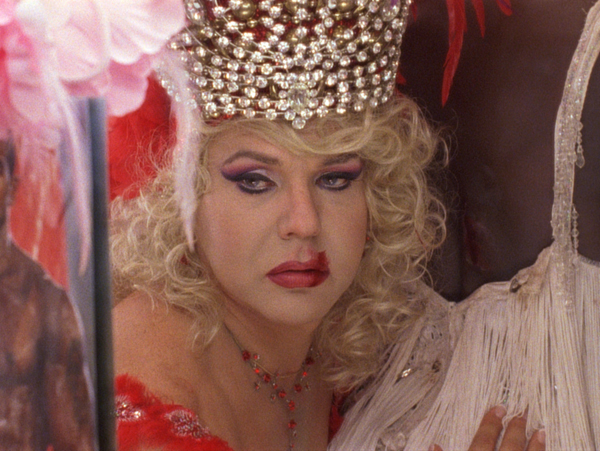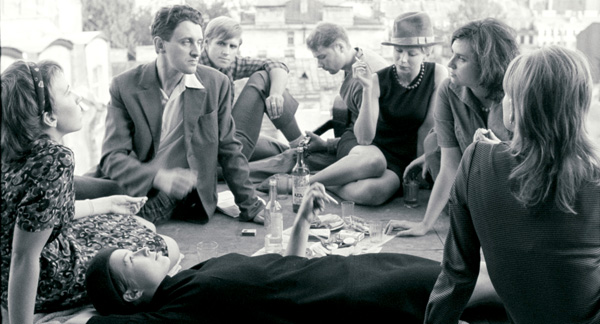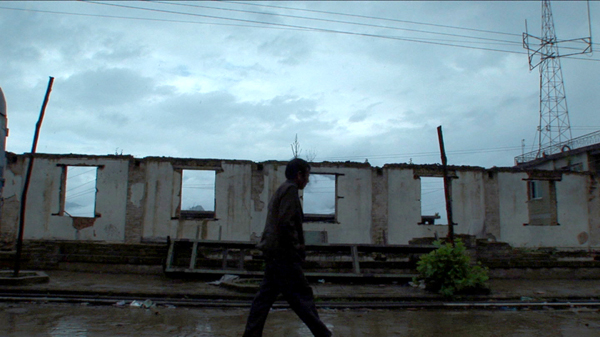|
Reviews of Recent Independent, Foreign, & Documentary Films in Theaters and DVD/Home Video

THE 47TH
NEW YORK FILM FESTIVAL After the reviews began trickling in following this year’s Cannes and Berlin film festivals, it became highly predictable which films would make the cut for the New York Film Festival: Catherine Breillat’s Bluebeard, Pedro Almodóvar’s Broken Embraces, and the immediately notorious Antichrist, directed by Lars von Trier (all three NYFF perennials). Also receiving more or less glowing notices were the new works of stalwarts Marco Bellocchio, Manoel de Oliveira, Andrzej Wajda, and Alain Resnais—their combined age, 339. True, all foreign-language films in the U.S. need all the press and attention they can get, no matter how well known the director. Fortunately (and smartly), the festival’s selection committee has also chosen films by relatively unknown filmmakers, allowing some sense of discovery to take place during the festival’s first week.
Its Hollywood pitch would go like this: gritty ’30s Warner Brothers proletariat agitprop meets The Sea Wolf crossed with The Caine Mutiny, topped with a Norma Rae-like rabblerousing speech. Sabu, known for his comedies, based his fifth film on a 1929 novel by Takiji Kobayashi, a writer that I have to admit I’ve never heard of. (Kobayashi, a member of the outlawed Japan Communist Party, was arrested and tortured to death in 1933 by the Tokyo police.) The film is set during the height of Hirohito’s Imperial Japan, confined almost completely within the pistons, cob wheels, and blistering steam of the Kanikosen, a storm-tossed, floating crab cannery-turned-hell hole, where impoverished and malnourished laborers are virtual slaves. They have no power within their grasp, except maybe how they could end their misery, leading to a hilarious and deadpan scene of hapless mass suicide, with visual humor that would make Buster Keaton proud. And in the Hollywood tradition of not letting historical accuracy interfere with good looks, some of the cast sport the biggest and most perfectly placed bed head, rivaling Robert Pattinson.
Although the closing credits disclaim that the film is fiction, it closely adheres to Brodsky’s life. He, in fact, briefly appears in a grainy home video, but it’s hard to distinguish him apart from the dead ringer actor, Grigoriy Dityatkovskiy, playing him. And unlike so many biopics, A Room and a Half never insists on the importance or uniqueness of its subject. Irreverently and touchingly, it’s really about the love between an only child and his parents. Brodsky was kicked out of the Soviet Union in 1972, and never saw his parents again. Another international festival premier is the 172-minute, shot-on-video Ghost Town, a diffused and impressionistic look of a dying town lacking a defining moment or sequence. Following the remaining inhabitants of Zhiziluo, director Zhao Dayong enmeshes the viewer in the stark poverty of the region; this is pure Cinema of Abjection. Offering occasional relief is the stark contrast between the deserted, skeletal buildings against the breathtaking, jagged, and snowcapped mountains of Southwest China close to the Myanmar border. The town’s scene-stealing animals outnumber the inhabitants; they are less self-conscious in front of the camera.
New to the festival is João Pedro Rodrigues with his strangely uninvolving To Die Like a Man. Fernando Santos stars as Tonia, short for Antonia (born Antonio), in an exceptionally down-to-earth performance for a character who has made a 20-year living as the blonde drag queen of Lisbon. But the script limits Tonia to that of the sacrificial, self-pitying drag queen in love with a much younger, suicidal junkie, who keeps pressuring Tonia to go all the way and become a woman. The lovers
are more ideas than characters, going through the motions of the doomed
and dejected. She nurtures, he lashes out. We know from their first
scene together the cause of their impending tragedy, their inability to
change. Despite the hothouse atmosphere or the backstage tantrums and a
suicide attempt, Rodrigues lowers the temperature with his slow, steady
camera for a flabby 138 minutes. The only emotional pull is the
Portuguese pop ballads Tonia sings to herself, which aren’t likely to
resonate with those not familiar with the songs. Occasionally, like in
Rodrigues’s first film, O Fantasma, there’s a scene or two that
pushes the envelope to jolt the audience to attention. But compared to
that other, darker, and shorter film, To Die is chaste.
Kent Turner
|




